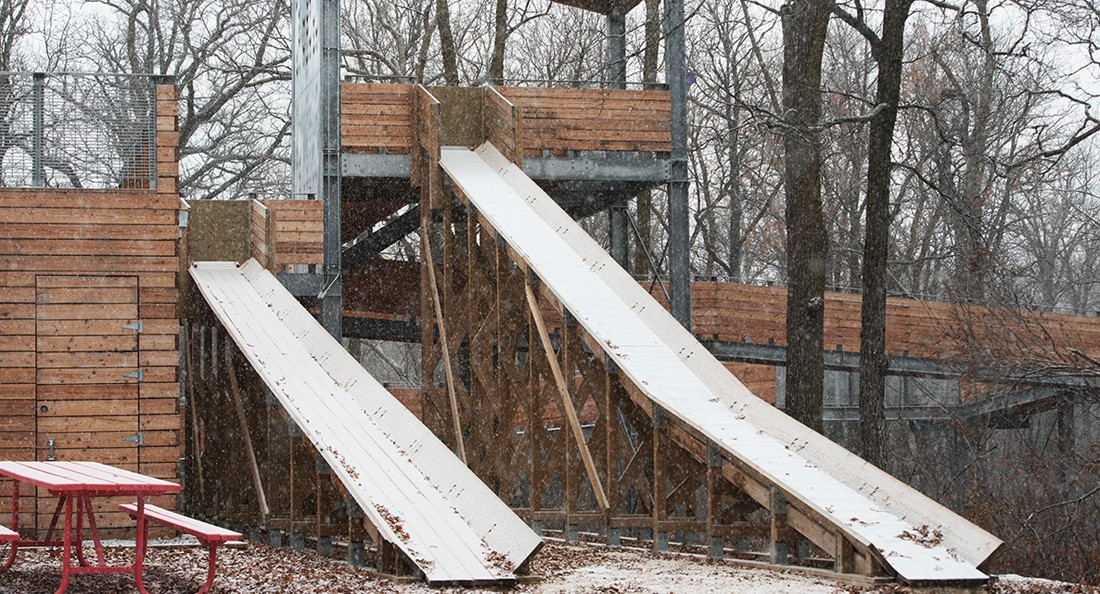Accessible design wins big
Olympic committees give Winnipeg firm bronze
The Manitoboggan, a toboggan sledding structure in St. Vital Park designed by Public City Architecture, was awarded the International Olympic Committee and the International Association for Sports and Leisure Facilities Bronze Award and the International Paralympic Committee and International Association for Sports and Leisure Facilities Distinction Awards on Nov. 5 at a ceremony in Germany. The awards celebrated the structure’s long-term functionality and accessibility.
Liz Wreford, Public City’s principal landscape architect, says the firm was “a little surprised, but also just proud” to be part of these awards.
“In comparison to all the other projects that got awards, it was very small. Small budget and small in area, so it’s rare that a project like this would be awarded against high-profile, large-budget ones,” she says. “It was a nice contrast to the other large recreation facilities that received awards.”
Wreford says Public City began working on the Manitoboggan in 2013, but initially, accessibility was not a major design consideration.
“It’s funny. The City’s accessibility co-ordinator, Judy Redmond at the time, sort of threw down a challenge for us: how do you make a toboggan slide accessible?” she says.
“Built toboggan sled structures don’t really exist anywhere else (besides Manitoba) ... because there’s hills in most other cities, so it was a challenge figuring out how we could get people up to the top of the slides, and not just people with mobility issues, but also so that people can pull up kids on a toboggan.”
What Public City came up with is the most prominent feature of the structure: a long ramp that takes sledders through the surrounding tree canopy on their way to the top.
“It was really a process of making the ramp as desirable of a way up as the stairs are,” Wreford says, ensuring that the ramp and stairs started and ended at the same place, but making the experience of going up the ramp more interesting.
David Kron, spokesperson and member of the steering committee for Barrier Free Manitoba, says the structure is a great example of best practices in designing for accessibility in the built environment.
In the Accessibility for Manitobans Act, the built environment includes things in public spaces, like sidewalks and structures in parks.
“Anything can be designed so that everybody can use it to some degree,” he says. “Good design does mean that it’s useful for everybody, whether that be an adult or a parent (with) young kids, so that people can interact with it directly.”
Kron says good design means that something is usable for people “zero to being a senior, and it doesn’t really matter if you have a physical disability or a cognitive disability. It will work for everyone.”
Published in Volume 74, Number 11 of The Uniter (November 21, 2019)







